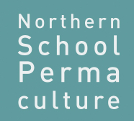The Northern School of Permaculture
Better by Design
You are here
Education and Training design brief - at the Northern School
A good education system has:-
Three main characteristics:
- all those who want to learn are provided with access to available resources, at any time in their lives
- all those who want to share what they know are empowered to find those that want to learn from them
- all those who want to present an issue to the public are furnished with the opportunity to make their challenge known.
Four key elements:
- things (places, objects, books, videos)
- models (skills, concepts, patterns)
- peers (collaborators in learning)
- elders (teachers and learning guides).
Services that help learners to learn:
- a reference service for educational objects - that facilitates access to things, places or processes used for learning
- a skills exchange that matches people wanting to learn with those willing to help them
- peer matching - a communication network for people wishing to find others with similar learning objectives
- a reference service to educators-at-large.
Three types of educational competence - the ability to:
- create and operate exchanges and networks
- guide students in the use of learning networks and resources
- act as guides in difficult, or complex, intellectual journeys.
A good education system will also use convivial tools.
Based on De-Schooling Society, Ivan Illich, Learning Webs, Chapter 6
Edited version of a document from the archives of the Permaculture Association (Britain) and the Permaxulture Academy (UK) circa 2000
Theme by Danetsoft and Danang Probo Sayekti inspired by Maksimer
